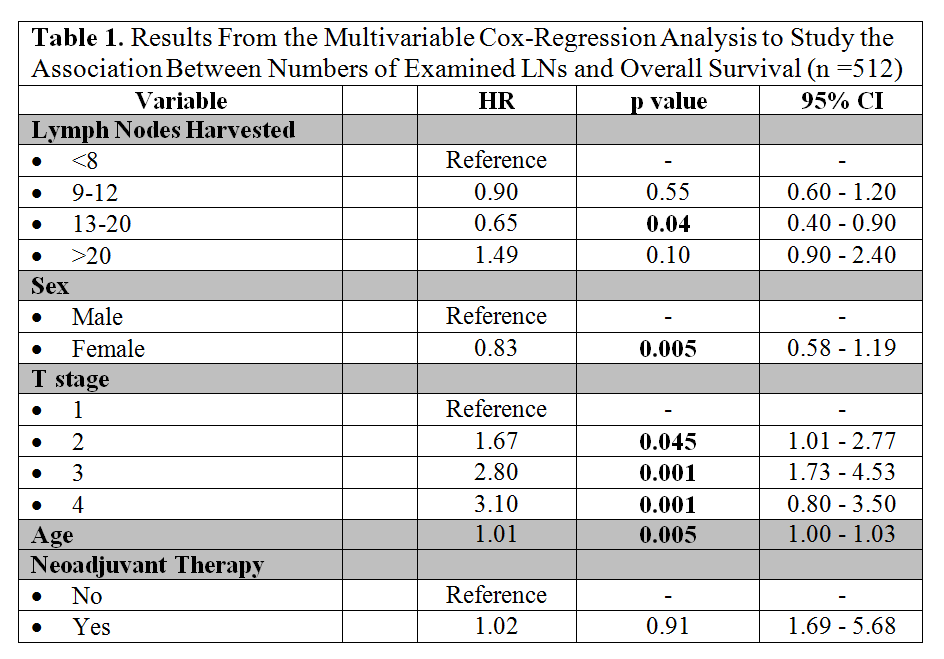A. Salem1, R. Shridhar2, K. Almhanna2, S. Hoffe2, E. Toloza2, K. Meredith3 3Florida State University College Of Medicine,Department Of Surgery,Tallahassee, FL, USA 1University Of Wisconsin,Department Of Surgery,Madison, WI, USA 2Moffitt Cancer Center And Research Institute,Department Of Surgery,Tampa, FL, USA
Introduction:
Tumor depth and nodal status are critical for adequate staging of esophageal cancer. Assessment of a higher number of lymph nodes (LN) during curative resection has been shown to correlate with improved survival for many cancer types. We sought to examine the impact of the number of lymph nodes (LN) harvested during esophagectomy on esophageal cancer related outcomes.
Methods:
From a comprehensive esophageal cancer database we identified patients who underwent curative resection from 1994 to 2013. The impact of total lymph nodes (LN) retrieved on disease-free survival (DFS) and overall survival (OS) was investigated.
Results:
In total, 635 patients were identified. Patients were divided on the basis of total number of lymph nodes removed (<8, 9-12, 13-20, and >20). There was no difference in the pretreatment distribution of tumor stages among the studied groups (p=0.23). The 5-year OS and DFS rates for the group by lymph node category were (43%, 42%, 55%, and 36%, p=0.18) and (44%, 37%, 46%, and 36%, p=0.52), respectively. Total number of lymph nodes assessed did not correlate with reduced risk of recurrence or improved survival. On multivariable analysis controlling for age, sex, histology, neoadjuvant therapy, only removal of 13-20 LNs correlated to improved oncological overall survival outcome (HR=0.65, p=0.04, CI=0.4-0.9) (Table 1.).
Conclusion:
In a tertiary cancer center, we demonstrated that only removal of 13-20 lymph nodes during esophagectomy correlated to improved overall survival. While the importance of standardized pathologic examination and adequate nodal staging is of utmost importance for patients with esophageal cancer undergoing esophagectomy the optimum number of lymph nodes removed clearly warrants further investigation.
